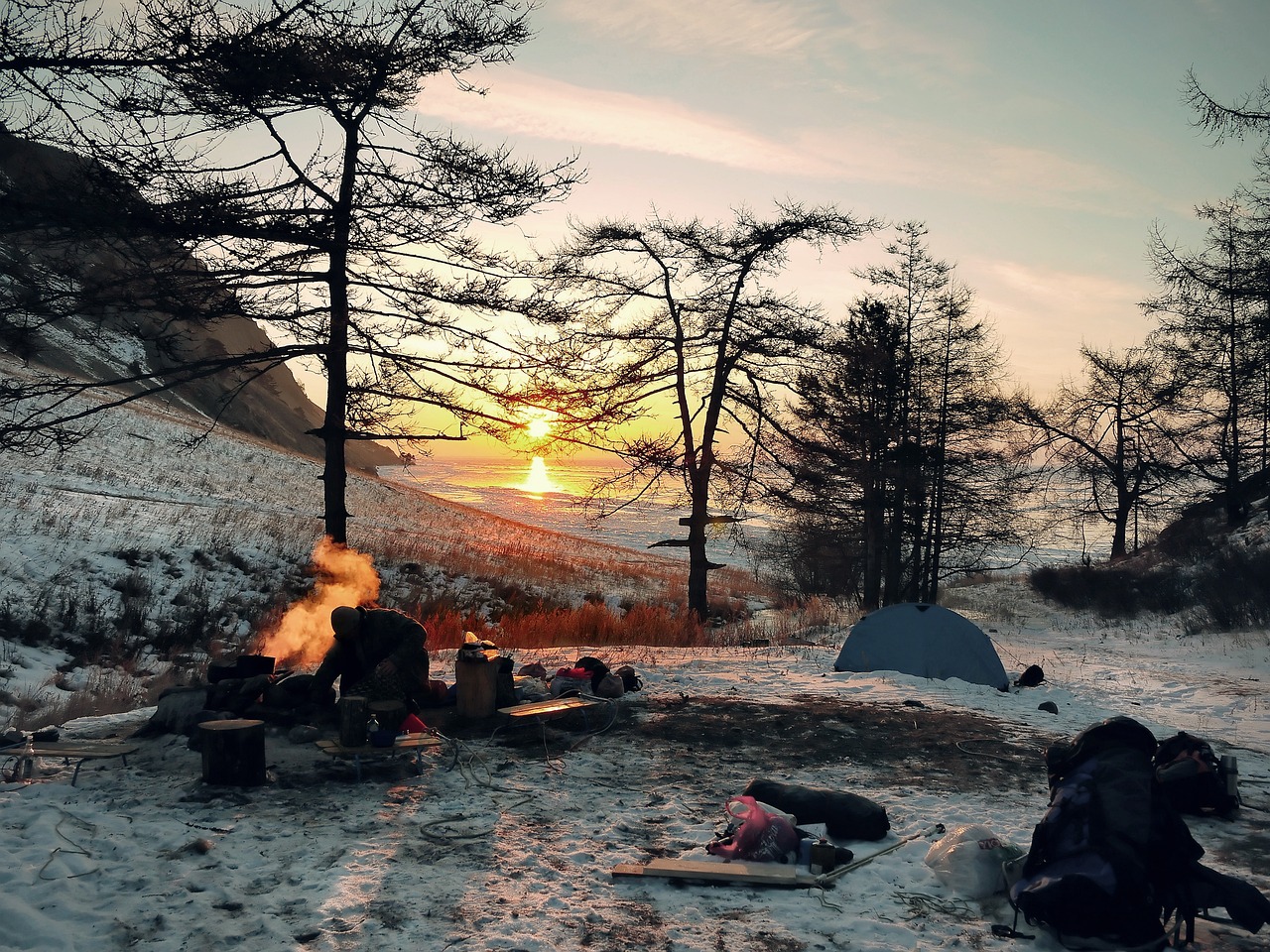Imagine finding yourself stranded in the vast wilderness, surrounded by towering trees and unfamiliar terrain. In such a situation, it’s essential to be equipped with the knowledge of what you need to survive. This article is here to help you navigate through the challenges of the wild by revealing the top 5 crucial items that can make the difference between life and death. From shelter to sustenance, we’ve got you covered with expert advice that will keep you safe and able to conquer the great outdoors. So, get ready to embark on an adventure and discover the key components that will ensure your survival in the wilderness.
Shelter
When venturing into the wilderness, one of the first priorities is ensuring you have suitable shelter. A tent provides a portable and convenient option that protects you from the elements and offers a comfortable place to rest. Look for a tent that is lightweight and easy to assemble, as you don’t want to waste precious time struggling with complicated setups. It’s also essential to consider the size of the tent; make sure it can accommodate you and any fellow adventurers comfortably.
Tent
A good tent should be durable and waterproof, capable of withstanding strong winds and heavy rain. Look for models with reinforced seams and a sturdy frame to ensure it can withstand the unpredictable nature of the wilderness. Additionally, it’s crucial to choose a tent suitable for the climate you’ll be facing. For colder environments, consider a four-season tent that offers additional insulation, while a three-season tent may be sufficient for milder conditions.
Sleeping bag
In conjunction with a tent, a high-quality sleeping bag is crucial for a comfortable night’s sleep and protection from the cold. Opt for a sleeping bag with a temperature rating appropriate for the climate you’ll be in. Many sleeping bags include insulation materials such as down or synthetic fibers, which provide excellent warmth. Ensure the sleeping bag is lightweight and easy to compress, allowing for convenient transportation during your wilderness adventures.
Firestarter
Firestarter tools are essential for survival in the wilderness, as fire provides warmth, cooking capabilities, and the means to signal for help. A reliable firestarter could be as simple as a pack of waterproof matches, but it’s always wise to bring backups like a lighter or a ferro rod. Remember, firestarter tools should be kept in waterproof containers to ensure functionality, especially during unexpected rainfall. Practice fire-starting techniques before embarking on your adventure so that you’ll be prepared when it matters most.
Food
Maintaining proper nutrition is paramount in the wilderness, as it provides the energy needed to endure physical challenges and stay mentally sharp. When packing food supplies, consider your calorie requirements, as they may differ depending on factors such as climate, terrain, and the nature of your activities.
Water
Water is undoubtedly the most crucial resource you need to survive in the wilderness. Ensure you have a reliable means to access clean drinking water, either by carrying sufficient water bottles or using purification methods. Water purification tablets or portable filters are excellent options for treating water from natural sources such as rivers or streams. Remember, thirst isn’t always a reliable indicator of dehydration, so make a conscious effort to sip water frequently throughout your adventure.
Food supply
When it comes to food supplies, aim for meals that are lightweight, easy to prepare, and provide the necessary nutrients to sustain you. Dehydrated or freeze-dried meals are popular options, as they are compact and retain their nutritional value. Additionally, packing some energy bars, trail mix, and dried fruits can serve as convenient snacks during your wilderness journey. Plan your meals in advance and carefully portion them to avoid carrying unnecessary weight.
Cooking utensils
To effectively prepare meals and make your wilderness experience more enjoyable, a compact set of cooking utensils is essential. A lightweight camping stove or a portable grill allows you to cook food efficiently, even in adverse weather conditions. Additionally, pack a pot or pan, along with utensils like a spatula and a camping knife, to facilitate meal preparation. Don’t forget a set of reusable plates and cutlery so you can comfortably enjoy your meals while minimizing waste.

Navigation
Navigating through unfamiliar terrain can be challenging, but with the right tools and knowledge, you can ensure you stay on track and make your way back home safely.
Compass
A compass is a vital tool that enables you to determine your direction and navigate accurately. It works by pointing towards the Earth’s magnetic north, helping you orientate yourself and plan your route effectively. Familiarize yourself with how to read a compass and understand basic navigation principles before embarking on your wilderness journey. Make sure to pack a reliable and durable compass to avoid any mishaps while exploring unfamiliar territories.
Map
Accompany your trusty compass with a detailed map of the area you’ll be venturing into. A map not only provides an overview of the terrain but also highlights important landmarks, trails, and potential water sources. Ensure the map is waterproof or carry it in a protective case to prevent damage. Take the time to study the map before setting off and mark key waypoints or potential campsites to keep track of your progress.
GPS device
While traditional navigation tools like a compass and map are essential, a GPS device can offer an additional layer of security and convenience. A GPS device allows you to track your exact location, record your route, and provide real-time information about altitude, speed, and distance covered. It’s important to note that GPS devices are electronic and may require batteries or an external power source, so pack extra batteries or a portable charger to keep it operational throughout your journey.
Clothing
Choosing the right clothing is crucial for staying comfortable and protected from the elements during your wilderness adventure. Layering your clothing ensures versatility and allows you to adjust for changing weather conditions.
Layered clothing
Layering is an effective strategy to regulate body temperature and adapt to various weather conditions. Start with a base layer that wicks away moisture from your body, helping to keep you dry and comfortable. A mid-layer, such as a fleece jacket or a down vest, provides insulation and traps body heat. Finally, an outer layer, like a waterproof and wind-resistant jacket, protects against rain, snow, and harsh winds. Don’t forget to pack extra clothes in case of emergencies or unexpected changes in weather.
Rain gear
Being prepared for rain is essential when spending time in the wilderness. Pack a lightweight, waterproof rain jacket and pants to keep you dry during downpours. Look for rain gear that is breathable to prevent excessive sweating and discomfort. Additionally, consider bringing a packable rain cover for your backpack to protect your gear from getting wet. Being equipped with adequate rain gear ensures you can continue your adventure, even in less favorable weather conditions.
Sturdy footwear
Proper footwear is crucial for navigating rough terrains and protecting your feet from potential injuries. Invest in a pair of sturdy hiking boots or trail shoes that provide ankle support, superior traction, and waterproof capabilities. Well-fitting footwear is essential to prevent blisters and ensure comfort throughout your journey. Don’t forget to break in your shoes before heading into the wilderness to avoid discomfort or foot-related issues.

First Aid
Accidents and injuries can happen unexpectedly in the wilderness, making a well-stocked first aid kit an essential component of your survival gear.
Bandages
Bandages are vital for treating cuts, scrapes, and wounds to prevent infection and promote healing. Include a variety of adhesive bandages in different sizes to accommodate different injuries. Pre-packaged sterile gauze pads and adhesive tape are also useful for dressing larger wounds. Additionally, consider packing elastic bandages to provide support for sprained joints or muscular injuries.
Antiseptic
Cleaning wounds and preventing infection is crucial for proper wound care. Include antiseptic solutions, such as alcohol wipes or hydrogen peroxide, to cleanse wounds before applying bandages. Ointments like antibiotic cream or petroleum jelly can also help protect and promote healing. Don’t forget to pack an assortment of disposable gloves to maintain hygiene while attending to injuries.
Medications
If you are on any prescription medications, ensure you have an adequate supply to last throughout your wilderness adventure. Additionally, pack a basic first aid medication kit, including items such as pain relievers, antihistamines, anti-diarrheal medication, and any necessary personal medications. It’s essential to consider any potential allergies or medical conditions when selecting medication to include in your kit.
Tools
Having the right tools at your disposal can significantly improve your wilderness experience and address any unexpected challenges that may arise.
Knife
A reliable and multi-purpose knife is an essential tool for any wilderness expedition. Whether it’s for cutting rope, preparing food, or crafting makeshift tools, a quality knife proves invaluable. Choose a knife with a fixed blade for increased durability and versatility. Ensure it comes with a sheath for safe storage and convenient access during your journey.
Multi-tool
A multi-tool consolidates several useful tools into one compact device, providing convenience and versatility. Look for a reliable multi-tool that includes features such as pliers, screwdrivers, a saw, and a can opener. These tools prove useful in various situations, from repairing equipment to handling small tasks around the campsite. A multi-tool is a valuable addition to your survival kit.
Flashlight
A dependable flashlight is a must-have for any wilderness adventure, as it helps you navigate in low light conditions and provides a valuable sense of security. Opt for an LED flashlight as it offers a powerful, long-lasting beam with minimal battery consumption. Don’t forget to pack extra batteries or consider a rechargeable flashlight to avoid being left in the dark when you need it most.

Fire
Fire is an essential survival tool, providing warmth, protection, and the means to cook food. Ensure you have the necessary tools to start and maintain a fire, especially in challenging weather conditions.
Lighter
A reliable lighter is often the simplest and most convenient way to ignite a fire. Choose a windproof and waterproof lighter for greater reliability. Additionally, pack multiple lighters in different locations, such as your pocket, backpack, and emergency kit, to ensure you have a backup if one fails or gets misplaced.
Matches
Matches are another crucial fire-starting tool to include in your survival kit. Choose waterproof matches or keep them in a waterproof container to ensure they remain functional even in damp conditions. It’s also wise to pack strike-anywhere matches, which enable you to easily ignite them on various surfaces. Combine matches with fire starters like cotton balls soaked in petroleum jelly for convenient fire ignition when necessary.
Firewood
While fire starters are essential for getting a fire going, firewood is equally important for sustaining a fire. Depending on your location, firewood might be readily available or may need to be collected. Familiarize yourself with any regulations or guidelines regarding firewood collection in the area you’ll be exploring. Dry and seasoned firewood burns more efficiently and produces less smoke, making it the ideal choice for cooking and staying warm.
Communication
Being able to communicate with others is essential for safety and potentially calling for help in case of an emergency. Pack tools that allow you to maintain contact and signal for assistance.
Cellphone
A cellphone is a valuable tool for communication in the wilderness, as long as there is sufficient signal coverage. Ensure your cellphone is fully charged before your journey and consider investing in a portable charger to extend its battery life. Familiarize yourself with emergency numbers and save them in your contacts. Keep in mind that signal availability may be limited in remote areas, so it’s wise to have alternative communication methods as well.
Whistle
A whistle is a compact and powerful signaling device that can be heard over long distances. Attach a whistle to your backpack or keep it easily accessible so you can quickly alert others in case of an emergency. Follow the three short blasts rule when using a whistle to signal distress. This universal signal can alert fellow hikers or potential rescuers to your situation.
Signal mirror
A signal mirror is a simple yet effective tool for attracting attention during an emergency. Flashing sunlight off the mirror creates a bright light that can be seen from afar. Aim the mirror at the target and reflect sunlight onto it, alerting nearby people or aircraft to your presence. It’s important to practice using a signal mirror beforehand to ensure you are familiar with its operation.
Protection
Remaining safe and protected in the wilderness is of utmost importance. Consider including tools that can deter potential threats or attract help if needed.
Pepper spray
Pepper spray is a non-lethal self-defense tool that can effectively deter animals or humans if encountered in the wilderness. It provides a temporary incapacitating effect, buying you time to retreat or call for help. Ensure you are familiar with proper usage and keep the pepper spray easily accessible in case of an emergency.
Bear whistle
When venturing into areas with potential bear encounters, a bear whistle is a useful tool for alerting bears to your presence. The loud noise emitted by the whistle can help prevent surprise encounters, reducing the risk of dangerous interactions. Attach the bear whistle to your backpack or keep it within reach for quick access when needed.
Personal alarm
A personal alarm is a compact and loud device that can attract attention and deter potential threats. Activating the alarm in case of danger can startle an attacker or alert others nearby to your predicament. Keep the personal alarm easily accessible, such as on a keychain or within a reachable pocket, for quick and effective use.
Sanitation
Maintaining proper sanitation and hygiene practices ensures both your health and the preservation of the wilderness environment.
Toilet paper
Proper disposal of human waste is essential for preserving the natural environment and preventing contamination of water sources. Pack biodegradable toilet paper or consider using natural alternatives like leaves or snow, depending on the environment. Carry a sealable bag for waste disposal, ensuring you leave no trace of your activities.
Hand sanitizer
Maintaining hygiene in the wilderness can be challenging, but hand sanitizer proves invaluable when access to water and soap is limited. Pack a travel-sized bottle of hand sanitizer and use it before and after meals or any time you need to cleanse your hands. Additionally, consider using biodegradable soap for other personal hygiene needs, ensuring it has minimal impact on the environment.
Trash bags
Leave no trace of your presence in the wilderness by properly disposing of your waste and minimizing any negative impact on the environment. Pack a few extra trash bags to separate and contain any trash or waste generated during your adventure. Properly disposing of waste helps preserve the natural beauty of the wilderness and ensures the safety of wildlife in the area.
In conclusion, when venturing into the wilderness, it’s essential to be adequately prepared with the right gear and supplies. Prioritize shelter, ensuring you have a reliable tent, sleeping bag, and firestarter. Food and water supplies, along with cooking utensils, will help sustain you during your journey. Equip yourself with navigational tools like a compass, map, and GPS device to successfully navigate unfamiliar terrains. Dress appropriately with layered clothing, rain gear, and sturdy footwear. Maintain your health and safety with a well-stocked first aid kit and essential tools like a knife, multi-tool, and flashlight. Communication tools such as a cellphone, whistle, and signal mirror are essential for maintaining contact and calling for help if needed. Protect yourself from potential threats with tools like pepper spray, a bear whistle, and a personal alarm. Finally, practice proper sanitation and leave no trace of your visit by packing toilet paper, hand sanitizer, and trash bags. By ensuring you have these essential items and taking the time to understand their use, you can confidently embark on your wilderness adventure, well-prepared for whatever challenges may come your way.
